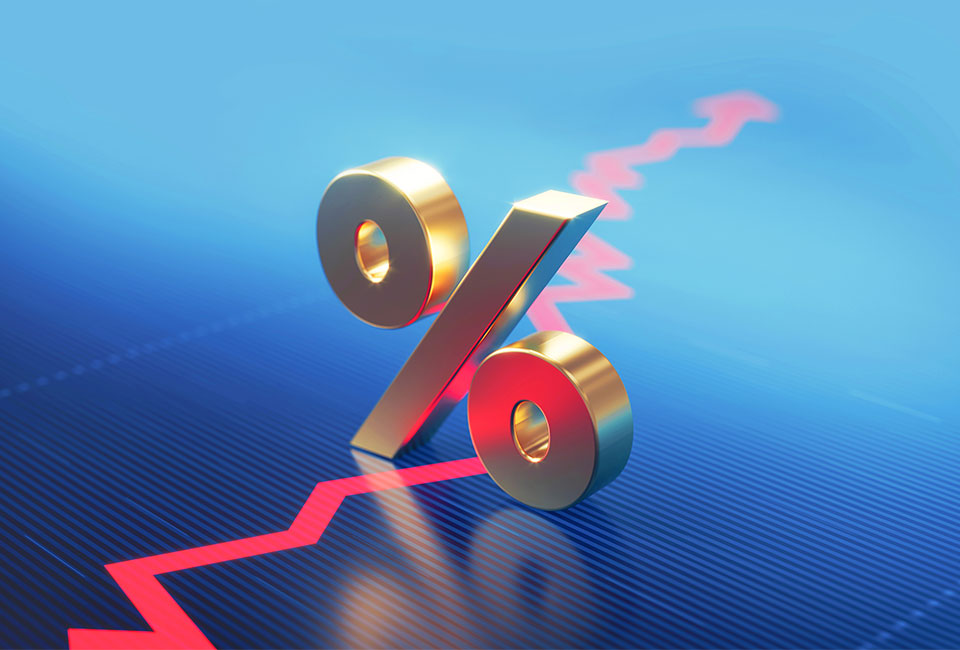Liberty News - Conversion rates continue to fall - and so do pensions
Since the beginning of the year, pension funds have recorded a return of +3.7%, as a result of which the coverage ratio currently stands at 106.5%. Due to the rise in interest rates, strategic asset allocation is increasingly being reviewed.
The investment year 2022 was characterized by the war in Ukraine and a significant increase in inflation and interest rates. At the same time, pension funds suffered losses in the two most important asset classes, equities, and bonds. With an average return of -9.0%, it was the weakest investment year since the financial crisis. This contrasts with the positive return for the year to date, which is +3.7% as of the end of August 2023. This encouraging development is accompanied by challenges such as declining growth prospects, the consequences of tightening monetary policy and still elevated inflation rates, according to the Complementa Risk Check-up study.
Interest rate was above the BVG minimum in 2022
Despite the investment losses, employees' pension capital earned an average interest rate of +2.0% in 2022. This is twice as high as the minimum BVG interest rate of +1.0% set by the Federal Council, which was applied by around one in three funds.
Pension funds hold on to real estate
At the end of 2022, 24% of pension fund assets were invested in «concrete gold». Compared with equities and bonds, real estate was still able to increase in value in some cases during 2022, which contributed to the higher ratio. Despite the sharp rise in interest rates, pension funds intend to hold on to real estate in the future and even expand domestic direct real estate. However, the situation could change with regard to traded real estate funds: one in three funds plans to reduce its exposure to listed Swiss real estate. This can be attributed, among other things, to the fact that listed funds closed last year in strongly negative territory due to the decline in premiums. Investment foundations continued to generate positive returns. As a result, listed real estate funds could lose further importance soon. Managers currently consider the interest rate level to be the greatest risk in the Swiss real estate market, followed by fears of regulatory intervention and economic worries.
Bond share reaches an all-time low
Pension funds rely on a diversified investment mix. At the end of 2022, the equity ratio was 29.5%, slightly above the historical average of the last 20 years. The proportion of bonds in the portfolio has decreased steadily in recent years due to the low level of interest rates. Over time, the relative share of bonds was significantly reduced in favor of real estate and alternative investments. After the setbacks in 2022, the proportion of fixed-income securities (including liquidity) is 36.3%. By comparison, in 2013 it was still just under half of assets. Alternative investments are trading at a high of slightly above 10%.
Discussion on strategic asset allocation renewed
The significant rise in interest rates since the end of 2021 has reignited the discussion on strategic asset allocation. Due to the new interest rate environment, one in five pension funds intends to increase the bond quota for government and/or corporate bonds again, while another fifth is still in discussions on this. However, most respondents do not currently intend to increase the bond quota. It should also be noted that pension fund managers continue to have a very positive attitude toward infrastructure and real estate investments. Furthermore, it is precisely these investments that offer a certain degree of inflation protection in times of higher inflation rates.
Technical interest rate: Interest rate promise for pensioners increased
Due to the rise in interest rates, pension funds once again have more leeway for the interpretation of the technical interest rate. For example, around 30% of the participants state that an increase in the technical interest rate is planned or at least being discussed. A possible trend reversal already took place last year. After years of steady reductions, the technical interest rate was increased by 0.1 percentage points to 1.7%. This reduces the valuation of the pension capital, which leads to a positive effect on the coverage ratio.
Conversion rate continues to fall
At just under 5.3%, the conversion rate in 2023 is again 0.1 percentage points lower than in the previous year. As a result, pension funds are moving further away from the BVG minimum conversion rate of 6.8%, which does not take sufficient account of increased life expectancy. The actuarially correct conversion rate is currently 4.8% (with a technical interest rate of 1.75% and BVG 2020 generation tables). A conversion rate that is too high compared to the technical interest rate leads to retirement losses that younger age groups must pay indirectly through lower interest rates. To counteract the redistribution, pension funds have in some cases decided to make further reductions, which the average conversion rate is expected to fall to 5.10% over the next five years.
To keep the funding ratio constant, a return of at least 1.9% must currently be generated. Complementa is convinced that with the current investment mix, pension funds can expect a return above this target value in the long term.
About the study
The Complementa Risk Check-up Study 2023 was conducted for the 29th time. It is based on a data corpus of 444 pension funds with accumulated capital of more than CHF 760 billion.

